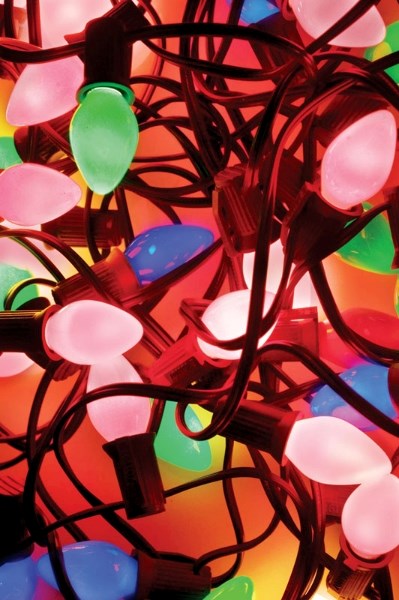Canadians are cutting waste and saving energy this Christmas, suggests a new survey.
Ipsos Reid released a poll earlier this month about how Canadians were going green for the holidays.
The survey involved about 1,000 Canadians and found that about 55 per cent planned to recycle their gift wrap after Christmas, while about 18 per cent would reuse it. About 84 per cent knew they could recycle their Christmas trees, and 55 per cent decorated those trees with efficient LED bulbs.
St. Albert residents typically send about 800 tonnes of trash to the dump each December, says Christian Benson, the city’s solid waste program co-ordinator, although that’s expected to drop this year with the start of curbside composting. “We do see a lot more recyclables,” he adds — typically 50 to 60 tonnes more, most of which is packaging.
Some forms of packaging should not go in the blue bag, he notes. He says Styrofoam is one of the worst culprits, as are ornaments, paper with metallic bits and those plastic clamshells that go around action figures. Otherwise, any clean cardboard, glass, and wrapping paper can be recycled.
Christmas trees will be picked up for mulching from Jan. 9 to 20, Benson adds, as long as they’re on the curb, visible and free of ornaments and wrapping. Residents can also haul the trees to the compost depot themselves.
The survey also found some areas for improvement. Just 30 per cent of Canadians composted their table scraps, for example, and 59 per cent used disposable napkins, plates, cups or cutlery during dinner.
Meat, bones, seafood and other table scraps can all go in the green compost bin, notes Benson.
“People are going to have a lot of leftovers. Rather than committing them to the landfill, make use of the green cart.”
The survey is considered accurate to within three percentage points 19 times out of 20.
Albertans are willing to spend $35 million more a year to fund provincial energy efficiency programs, suggests a new study.
C3, the group formerly known as Climate Change Central (the non-profit group that runs the province’s energy efficiency rebate program), released a survey this week about energy efficiency in Alberta.
The survey of about 3,000 Albertans found that about 81 per cent of Albertans said that they made saving energy a priority at home. Most had taken or planned to take about seven different energy saving measures in their homes, ranging from using energy-efficient lights (84 per cent) to installing drain water heat recovery systems (four per cent).
When asked what the most significant barrier to them doing more to save energy was, about 62 per cent said it was a lack of money. The survey found that about eight of 10 Albertans said rebates would help. Most would be willing to pay up to $2 more a month on such measures, suggesting that Albertans would be willing to spend about $35 million more a year on such rebates.
That’s about twice the amount of money that’s behind the current program, which is set to expire at the end of next year says Simon Knight, CEO of C3. “There’s an appetite to do more, but they’d like some financial assistance.” Energy efficiency would help shrink Alberta’s carbon footprint, give us more natural gas to sell abroad and save homeowners money.
The survey, which is considered accurate to within five percentage points 99 per cent of the time, can be found at climatechangecentral.com.




